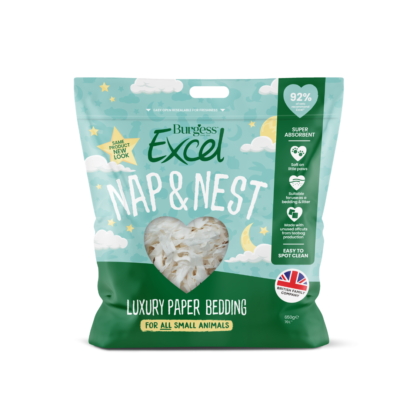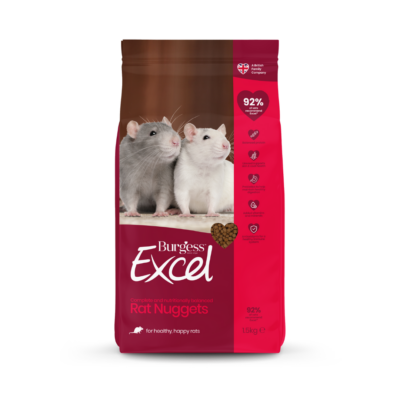When it comes to choosing the best rat food for your pet rats, Burgess Excel Rat Nuggets comes out on top. In fact, 92% of UK vets recommend our Burgess Excel small pets range.
A good diet for your pet rats is one that’s a complete rat pellet or rat nugget food, which, along with a continuous supply of clean, fresh water, gives them all the nutrients they need to stay happy and healthy.
Why are complete rat nuggets the preferred choice?
Rich in protein, which omnivores such as pet rats need in their diet, Burgess Excel Rat Nuggets also support a healthy digestion, healthy coat and healthy skin. We believe that these tasty nuggets of goodness are simply the best food for rats – and will soon become their favourite food too!
Pet rats can often be selective feeders, eating only the parts of rat feed they take a fancy to, which can lead to an imbalanced diet. That’s why it’s best to avoid ‘muesli-style’ rat food mix varieties and choose complete rat nuggets instead.
As well as ensuring that your pet rats get all the vitamins and minerals they need, rat nuggets are also ideal for adding enrichment to your pet rats’ daily life. Simply hide and sprinkle nuggets around their housing to keep their brains active and encourage their natural foraging behaviour.
At Burgess, all of our high quality rat food is made at our own factory in the heart of Yorkshire, using only ingredients that meet our stringent specifications.
Rat Food FAQs
Got a question about choosing rat pellets or nuggets over other types of rat food? To help you learn more about feeding a healthy diet to your pet rats, we’ve put together some really useful answers from our nutrition team at Burgess, the pet care experts.
Need more advice?
If you’re at all unsure about the best rat food your pet rats or have any concerns about specific nutritional requirements, ask your local veterinary practice for advice.
You can also call our expert team, available 9am-5pm, Monday to Friday, on +44 (0)1405 862241 who’ll be happy to help with your query. Alternatively, use our simple online contact form to get in touch with us.
Are your pet rats Burgess Excel rats? Join the Burgess Pet Club for exclusive offers and rewards.
















